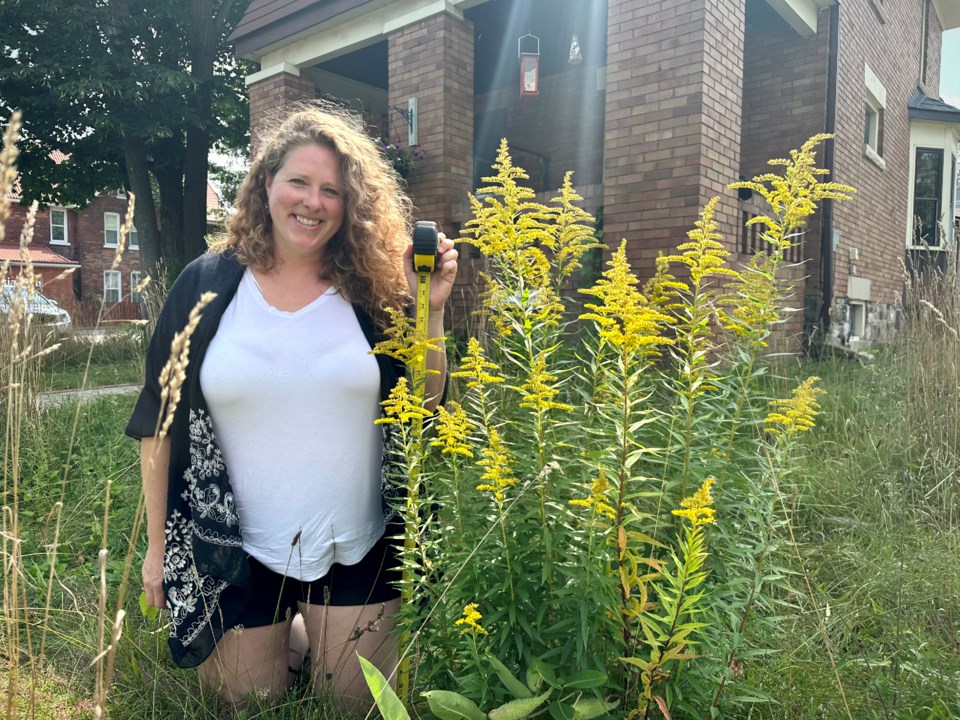OrilliaMatters welcomes letters to the editor at [email protected] or via our website. Please include your daytime phone number and address (for verification of authorship, not publication). The following letter is in response to an article about the city ordering a resident to cut her lawn, published Aug. 18.
As active advocates for sustainable living, we in Sustainable Orillia have to express concern over the recent predicament faced by Stacie Theis and her yard’s diverse ecosystem.
Her situation reveals the clash between Orillia’s Bee City designation, its climate action goals, and the enforcement of Chapter 834, bringing to light the need for an important conversation about the significance of embracing biodiversity and the need for adaptable bylaws.
Orillia’s commendable decision to become a Bee City in 2019 was an emblem of its dedication to promoting pollinator habitats and supporting ecosystems that drive our natural world. Stacie Theis’s decision to nurture her property’s native plants — welcoming a myriad of insects, bees, and other creatures — is a living embodiment of this commitment. It’s a demonstration of how individual choices can align with a collective vision for a more sustainable future.
However, the enforcement of Chapter 834’s guidelines, particularly the restriction on vegetation height, appears to contradict the city’s overarching objectives. The dichotomy between protecting biodiversity and enforcing a traditional standard of yard esthetics raises a fundamental question about the importance of municipal codes being adaptable — and adapted — to align with evolving environmental values.
Stacie Theis aptly highlights the incongruity of equating natural growth, such as the goldenrod flowers on her property, with industrial waste. In an era when cities worldwide are recognizing the critical role native flora plays in combating climate change and supporting essential pollinators, it’s imperative that local legislation reflects this understanding. A well-maintained natural habitat like Theis’s lawn can actively reduce our carbon footprint, conserve water, and contribute to a healthier ecosystem.
Furthermore, the suggestion to amend the bylaw’s height restriction to accommodate native pollinator plants makes ecological sense. Native plants can indeed reach varying heights and play a pivotal role in nurturing biodiversity. Scientific insights should guide bylaws to ensure they support, rather than hinder, the flourishing of native species.
We appreciate the Orillia city council’s initiative in addressing “chronic problem properties,” but as we navigate the future, it’s crucial to strike a balance between enforcing standards and nurturing diverse, ecologically conscious landscapes. Sustainable Orillia urges the city to reconsider the implications of Chapter 834 in light of Orillia’s Bee City status and broader environmental goals. Collaborative dialogue between citizens, experts, and local officials can pave the way for solutions that honour both community standards and environmental stewardship.
In closing, let us remember that the health of our planet depends on our ability to harmonize human progress with the needs of the natural world. The story of Stacie Theis’s yard is a reminder that each one of us has the power to create positive change and inspire others to follow suit. Let’s continue to cultivate a vibrant community that thrives for generations to come.
Sustainable Orillia would be most interested in supporting the city’s work to rationalize its bylaws with its commitment to a more sustainable community.
Stan Mathewson
President, Sustainable Orillia



